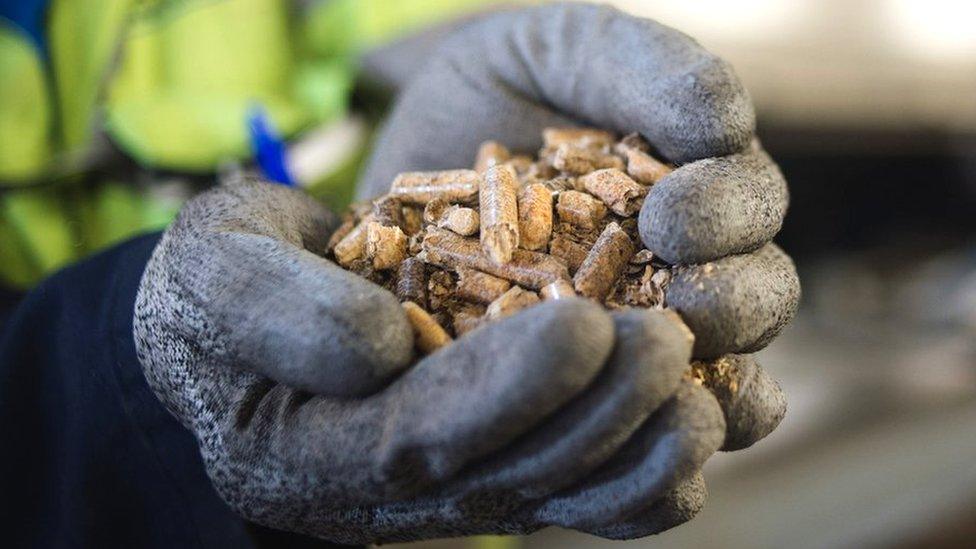The 'green' row over the UK's largest renewable power plant
- Published
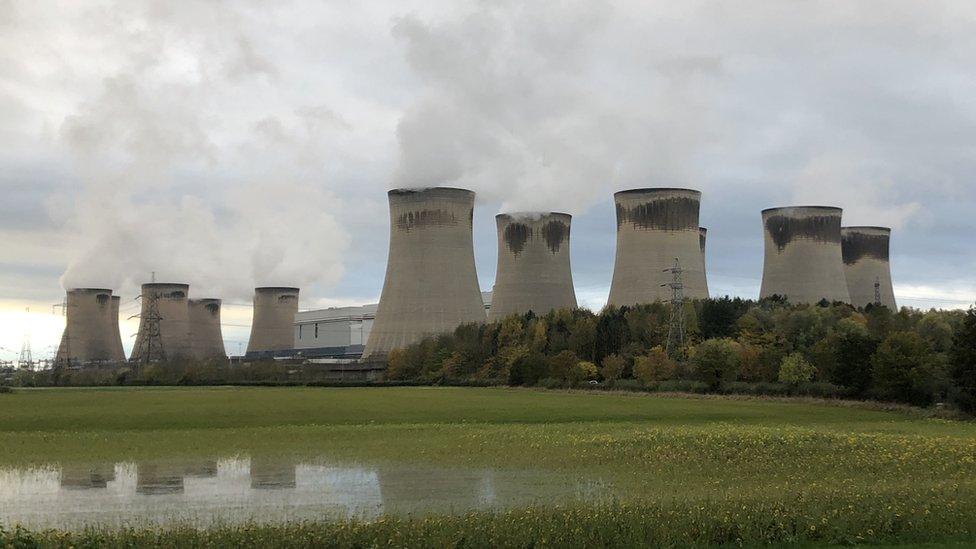
Drax is the UK's biggest renewable energy plant
This is the second of two articles examining the way wood pellets are produced and used as a green energy source. The first article can be found here.
The Drax power station near Selby, Yorkshire, is surrounded by both busy roads and small farms. A faint humming noise emanates all around the complex, while water vapour rises slowly and steadily from the cooling towers.
The scale of operations at this converted coal plant is gargantuan. It's the UK's largest renewable power station. Wood pellets are imported from the US on enormous ships that take up to 21 days in transit. They are then transported overland via rail, and Drax receives about 17 deliveries of wood pellets a day, operating 24 hours a day, six days a week.
Once inside, the pellets are pulverised into a powder, blown into boilers and then burnt. The steam from this process powers turbines that produce electricity.
In 2020, Drax generated 11% of the UK's renewable power - enough for four million homes. While the UK is by far the largest consumer of wood pellets, globally, biomass is a massive industry that is growing in value and reach.

The power station uses wood pellets to make electricity
The EU is also a major market, and South Korea and Japan are increasingly interested as well. This means that the search has widened for new sources of wood, for instance from Estonia.
Yet, Drax's green credentials have been comprehensively challenged by environmentalists and others recently. The climate think tank, Ember, calculates that the power station is now the UK's single largest source of carbon dioxide. The firm's share price weakened on this news breaking although it has subsequently regained ground. The stock was removed from the S&P Global Clean Energy Index, external in October after the index changed its methodology.
When it comes to the arcane world of climate accounting, biomass energy is classed as renewable based on the premise that trees grow back. So greenhouse gas emissions from trees are counted in the nation of land use rather than the place where they are burnt.
Yet, Mary Booth, founder of the environmental organisation Partnership for Policy Integrity, points out that "just because something is counted as zero because of an accounting convention does not mean it's carbon neutral".


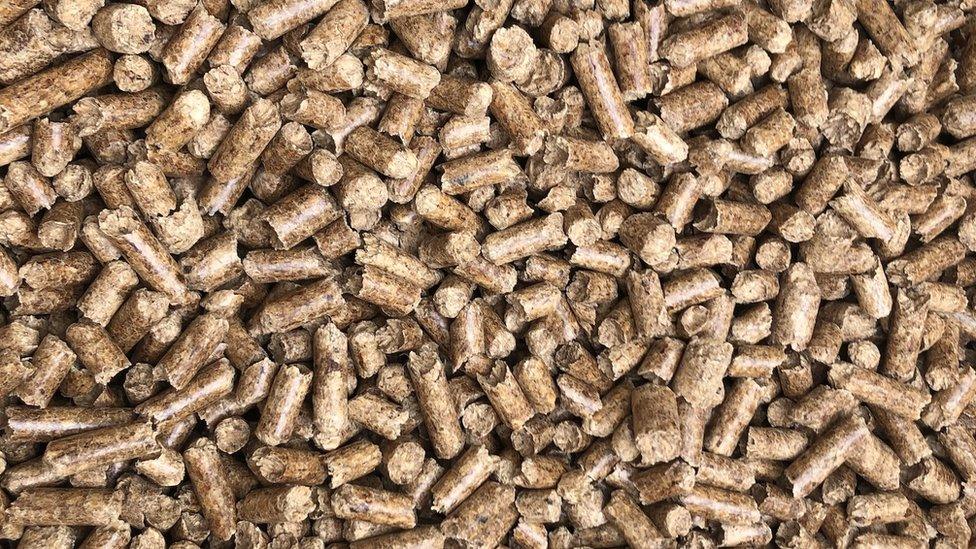
Drax received £832m in UK government subsidies in 2020
According to the think tank Chatham House, wood pellets from the US burnt in the UK generated 13-16 million tonnes of CO2 emissions in 2019 - equivalent to the emissions from 6-7 million cars.
Drax disputes this analysis and a company spokesperson says its biomass "meets the highest sustainability standards and these ensure that we do not use biomass that causes deforestation, forest decline or carbon debt".
Drax's latest annual report shows that its largest source of biomass pellets is low-grade roundwood. This is not waste and residue but wood that has little economic value. Yet it still has environmental value, if it were left intact to soak up atmospheric carbon.
In 2020, the company received £832m in UK government subsidies - which are set to continue until at least 2027. According to many environmentalists, this support would be better directed to wind and solar energy, which are more energy efficient, cost-effective and more carbon neutral.
At Glasgow's COP26 climate summit, officials did not take a clear stance on biomass - a leading EU climate official called for its biomass use, though with reservations.

Delegates at the COP26 summit in Glasgow did not clarify the position of wood pellets
However, the Glasgow Leaders' Declaration on Forests and Land Use, signed by leaders of over 130 countries, does commit them to curbing forest loss by 2030.
It is as yet unclear how this is to be done. Elly Pepper, a campaigner at transatlantic environmental coalition, Cut Carbon Not Forests, warns the agreement will fail if countries do not come to terms with their dangerous reliance on biomass.
"It's hypocritical for countries, including the UK, to sign this declaration while continuing billions in subsidies for this dirty energy industry," she says.
It seems unlikely that the UK government will end Drax's biomass subsidies ahead of their contracted end date in 2027. Some environmentalists have turned their sights instead to influencing future UK policy, such as the Biomass Strategy 2022. They're also hoping to reform the EU's Renewable Energy Directive, which subsidises biomass energy.
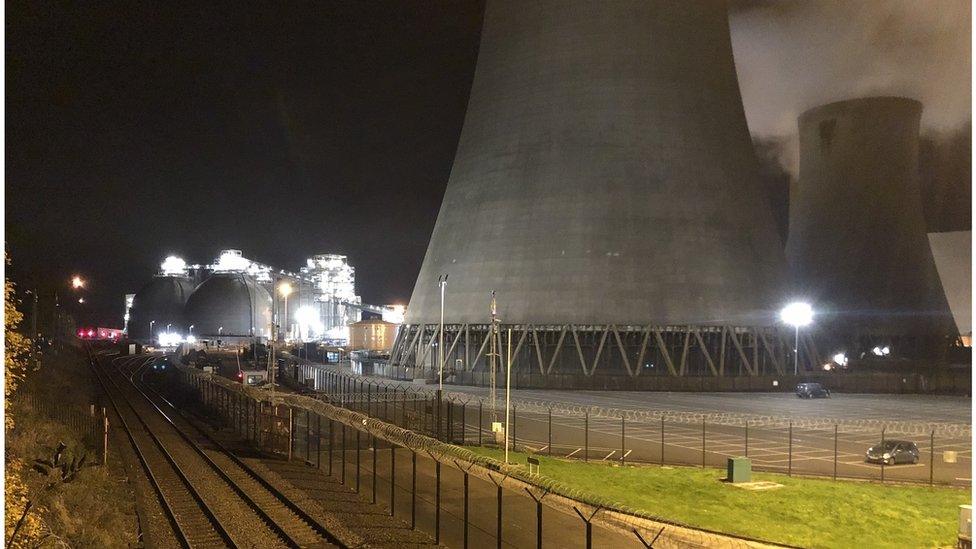
The plant receives about 17 deliveries of wood pellets a day
Peg Putt, who coordinates biomass campaigns for the Environmental Paper Network, worries that COP 26 could actually worsen the reliance on biomass.
The agreement on "the phase down of unabated coal power" could actually be interpreted as permitting mixing biomass with coal, she says, because "throwing biomass in with coal and co-firing appears to magically decrease the emissions and thus the emissions intensity of coal generation".
Drax, meanwhile, is looking beyond the next decade. It has proposed the development of BECC, or bioenergy with carbon capture and storage. This is a technology that essentially removes and stores carbon dioxide.
Drax argues that putting carbon dioxide under the North Sea will turn its operations carbon negative. Yet many environmentalists counter that this would just be a further licence to pollute.
Though there's been a public consultation process for the BECCS project, locals generally are not sure what is being proposed. The thick folders explaining the proposal at the library and the Drax-affiliated social club have been roundly ignored, while the consultation documents staked to a village field have whipped forlornly in the wind.
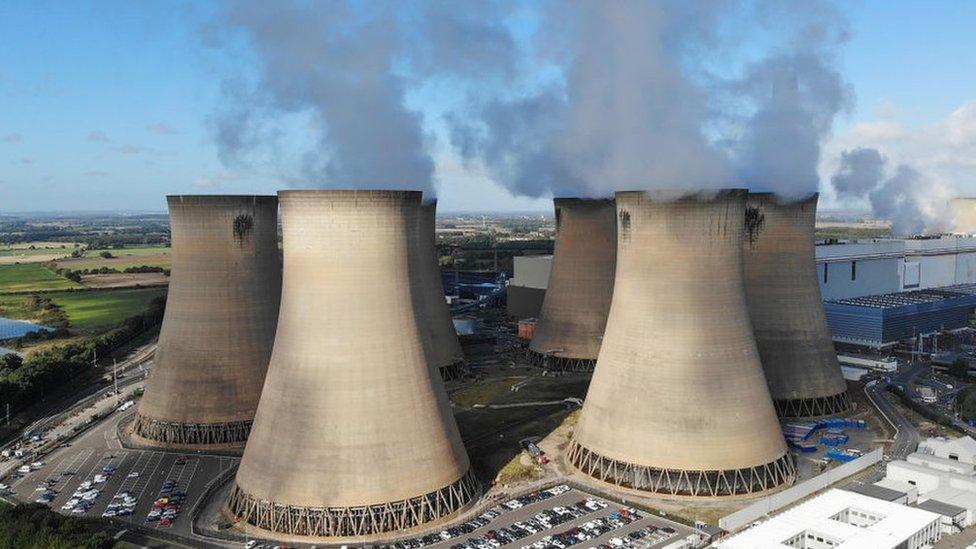
The company argues that putting carbon dioxide under the North Sea will turn its operations carbon negative
The future sourcing of energy is an especially hot topic due to the UK's current energy crisis.
A dramatic rise in the price of wholesale gas is the main reason consumers are facing huge increases in energy bills, and has also caused the collapse of some energy providers.
Drax says that biomass is a reliable alternative source of energy, but many environmentalists remain sceptical.
"We need real transformative change, not false solutions like biomass," says Ms Pepper.
Reporting for this article was supported by the Exploring Biomass and Climate Change fellowship of the National Press Foundation.
- Published11 January 2022
